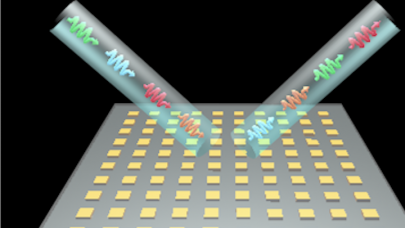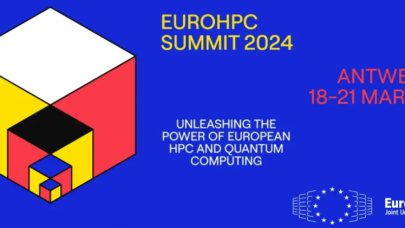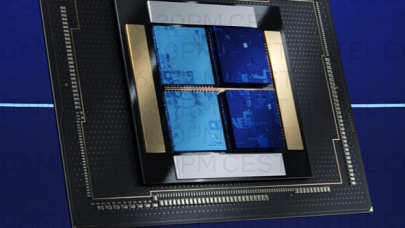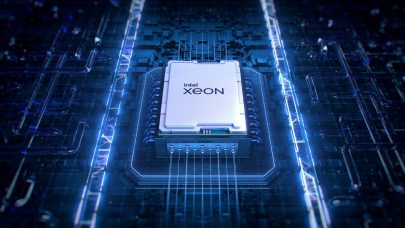Once you add enough zeros to something, it’s stops meaning anything to most of us. Million, billion, trillion… bajillion. But with supercomputers the more zeros, the more eye-popping it gets.
Supercomputing performance is measured in FLOPS (floating point operations per second). The world’s fastest supercomputers today can reach hundreds of petaflops—or 1015 floating point operations per second. And by next year, the world’s fastest supercomputers will top an exaflops.
Exascale supercomputers will perform a quintillion calculations every second. That’s 1018 FLOPs—a billion billion or a 1,000,000,000,000,000,000. To put that number in perspective, the Milky Way galaxy is 1 quintillion kilometers wide. It would take 40 years for 1 quintillion gallons of water to flow over Niagara Falls. And you’d need every single person on Earth calculating 24 hours a day for over four years to do what an exascale supercomputer can do in 1 second.
What can you do with that many zeros of computer performance?
Well, for one, you could download 100,000 HD movies in one second. Or, you could help solve the world’s most important and complex challenges. With exascale supercomputers, scientists and researchers will be able to make clean energy advancements, eliminate diseases, develop safer, more efficient vehicles, understand climate change, and more.
But every compute era promises to eclipse the previous in problem-solving power, doesn’t it? This time, there’s a key difference. Exascale computing isn’t just about a speed milestone or the few laboratories with the means to purchase a large-enough system. It’s a new era of compute capabilities prompted by a new era of questions.
Today, global digital transformation and the urgent need to extract insight from rapidly growing data has prompted a major shift in computing requirements. Status quo methods no longer work. Traditionally siloed workloads such as analytics, AI, simulation and modeling, and IoT are fusing into one business critical workflow operation at unprecedented scale and in real time. These requirements are driving the rapid evolution of supercomputing infrastructure. And they’re also enabling the broader adoption of supercomputing technologies to power innovation and digital transformation across every research and commercial data center.
If the Exascale Era is about new capabilities for new questions, then Exascale Day celebrates supercomputing and the people and organizations changing the world for the better with it. Because exascale technology will help us solve critical, global problems that simply can’t be addressed any other way.
That’s why we named October 18 “Exascale Day” (in a nod and wink to 1018 and some date formats). It’s the official day of recognition for the supercomputing and broader HPC communities and the role they play in our collective lives every day.
HPE Cray customers across the globe celebrated the inaugural Exascale Day last year. This year, we’ll do the same.
The U.S. Department of Energy (DOE) plans to roll out three exascale systems over the next three years, all with HPE Cray supercomputers. The Aurora system at Argonne National Laboratory and Argonne Leadership Computing Facility (ALCF), Frontier at Oak Ridge National Laboratory Leadership Computing Facility (OLCF), and El Capitan at Lawrence Livermore National Laboratory (LLNL) mark the next milestone in high-performance computing.
At Argonne, researchers will be able to use simulation, data-intensive, and learning applications (machine and deep learning) to drive exascale-speed research in the fields of fusion reactor plasmas, computational fluid dynamics, neuroscience, and drug response prediction. Using Frontier, OLCF scientists will accelerate science and technology innovation in fields such as fusion energy, disease genetics, and materials science. And at LLNL, the US National Nuclear Security Administration will use El Capitan to improve the science and technology surrounding the maintenance and modernization of the US nuclear arsenal.
From a single cabinet system to a supercomputer the fills an entire building, exascale technology will help us not only imagine the possibilities but make them happen. Argonne National Laboratory Director Paul Kerns captured the spirit of exascale computing and Exascale Day when he said, “Imagine a computer so powerful that it can predict future climate patterns, saving millions of people from drought, flood, and devastation. Or a computer so powerful that it can model a cancer cell with such accuracy that we can create a personalized treatment, just for you.”
Join us on 10.18 as we celebrate—and thank—all the visionaries and leaders who ask what if, why not, and what’s next. You make the world better for all of us. Keep asking.




























































